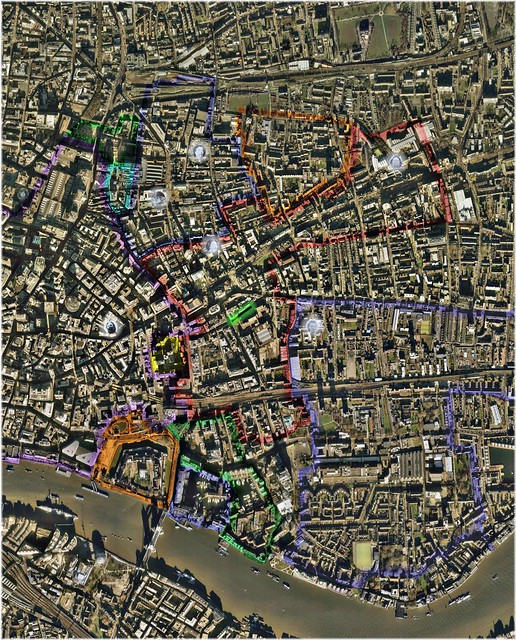This is my first time posting but for many years I have lurked out of sight. It seems a bit rude for me to come here and ask for assistance right away. So by way of introduction/breaking the ice i am Australian based and have a deep love for London history especially that of the East End. I have spent 25 years reading every ripper book I could find, alas like so many here my first book was "The Final Solution" (for shame) in my defense I was 14 and it was the onky JTR our library had that wasnt stolen. It was 1984, back when there was no Internet to tell me it was crap, thankfully it only took me half the book to realize it was. Raised on a steady diet of Poe, Dickens and Ripper books my tastes were for gaslights, shadows and the like. I am rather well read on English and London history. I have been researching a book for about two years now, which has bought me to the streets of the East End twice now.*
My book is set in a fictitious theatre in Little Alie St mainly set in present day and 1888 but spans the years between 1846 (when one of the Garrick Theatres burnt down) and now. Naturally a few key historical events like Jack the Ripper, Battle of Cable Street, The Blitz play a part. I have decided placed my theatre on the southern side of Little Alie St, where it sits like a stubborn relic surrounded by the demolition of the huge complex there. The books has many themes, and if people are interested I will add further details.
Trust me when i say i have done a lot of leg work already, i have been researching for ages but have a few things I am still trying to get answers for and figured where else to go but to you all here.*
1. I can't find any record of what was on the southern side of the street, the north seems to have heaps of info. Thought someone might still have access to Goads here
2. What was the history of the Camelot Fashion building and when was it closed? (i was heartbroken to see it being knocked down)*
3. Anyone have any old photos of Alie St and Leman St? (I have looked through your mega posts here with old pictures but they don't appear much
but they don't appear much
4. Where can I find historical parish boundary maps?
5. Any good places to research /see the damage the Blitz had on East End.
I'm sure I am going to have more questions, god knows the more I read the more questions I have, so if anyone can point me in the right directions or if though have any insights into the history of this street I would love to hear it
thanks
writing by ghostlight

My book is set in a fictitious theatre in Little Alie St mainly set in present day and 1888 but spans the years between 1846 (when one of the Garrick Theatres burnt down) and now. Naturally a few key historical events like Jack the Ripper, Battle of Cable Street, The Blitz play a part. I have decided placed my theatre on the southern side of Little Alie St, where it sits like a stubborn relic surrounded by the demolition of the huge complex there. The books has many themes, and if people are interested I will add further details.
Trust me when i say i have done a lot of leg work already, i have been researching for ages but have a few things I am still trying to get answers for and figured where else to go but to you all here.*
1. I can't find any record of what was on the southern side of the street, the north seems to have heaps of info. Thought someone might still have access to Goads here
2. What was the history of the Camelot Fashion building and when was it closed? (i was heartbroken to see it being knocked down)*
3. Anyone have any old photos of Alie St and Leman St? (I have looked through your mega posts here with old pictures
 but they don't appear much
but they don't appear much4. Where can I find historical parish boundary maps?
5. Any good places to research /see the damage the Blitz had on East End.
I'm sure I am going to have more questions, god knows the more I read the more questions I have, so if anyone can point me in the right directions or if though have any insights into the history of this street I would love to hear it
thanks
writing by ghostlight


 Sink the Bismark
Sink the Bismark Roy
Roy




Comment